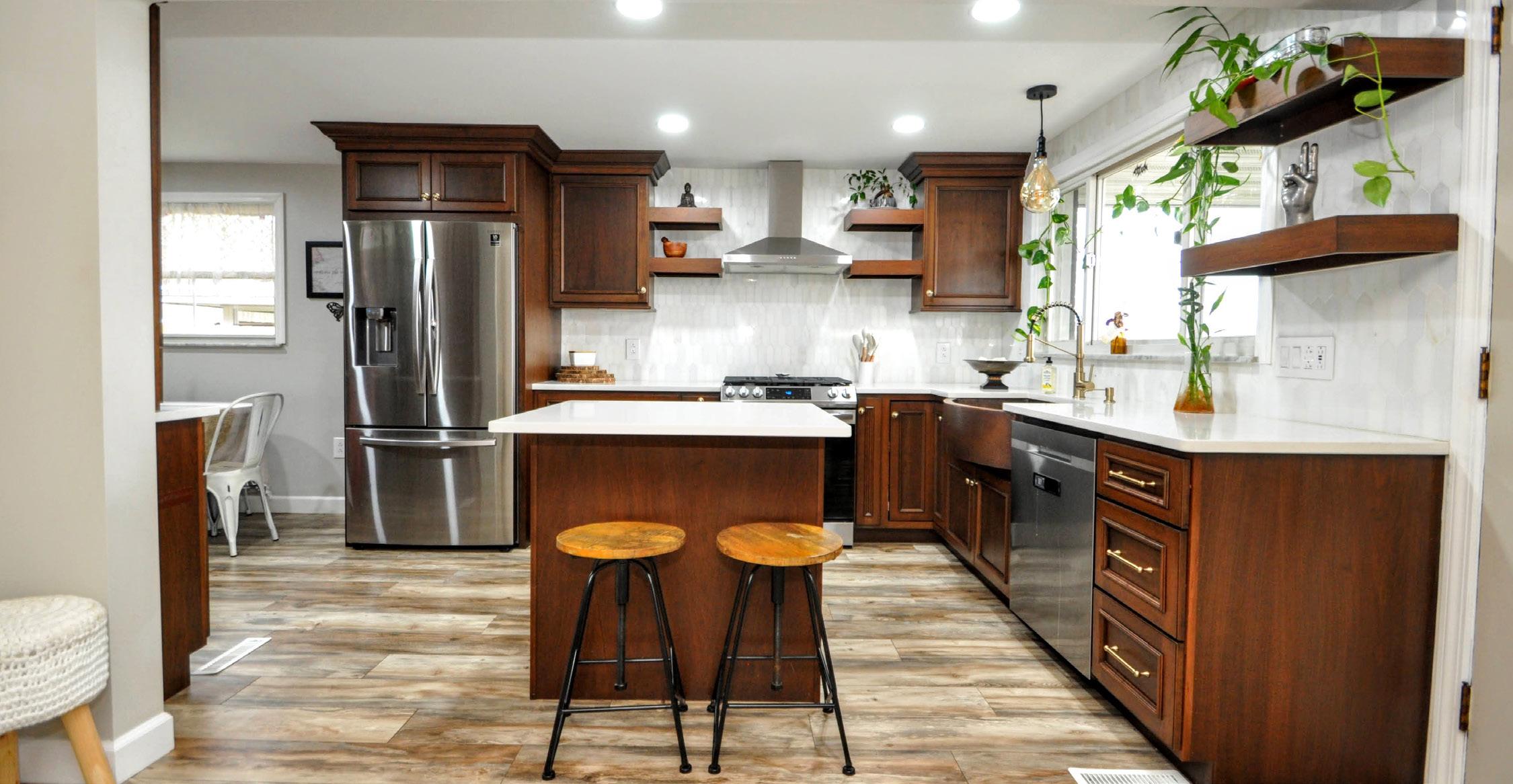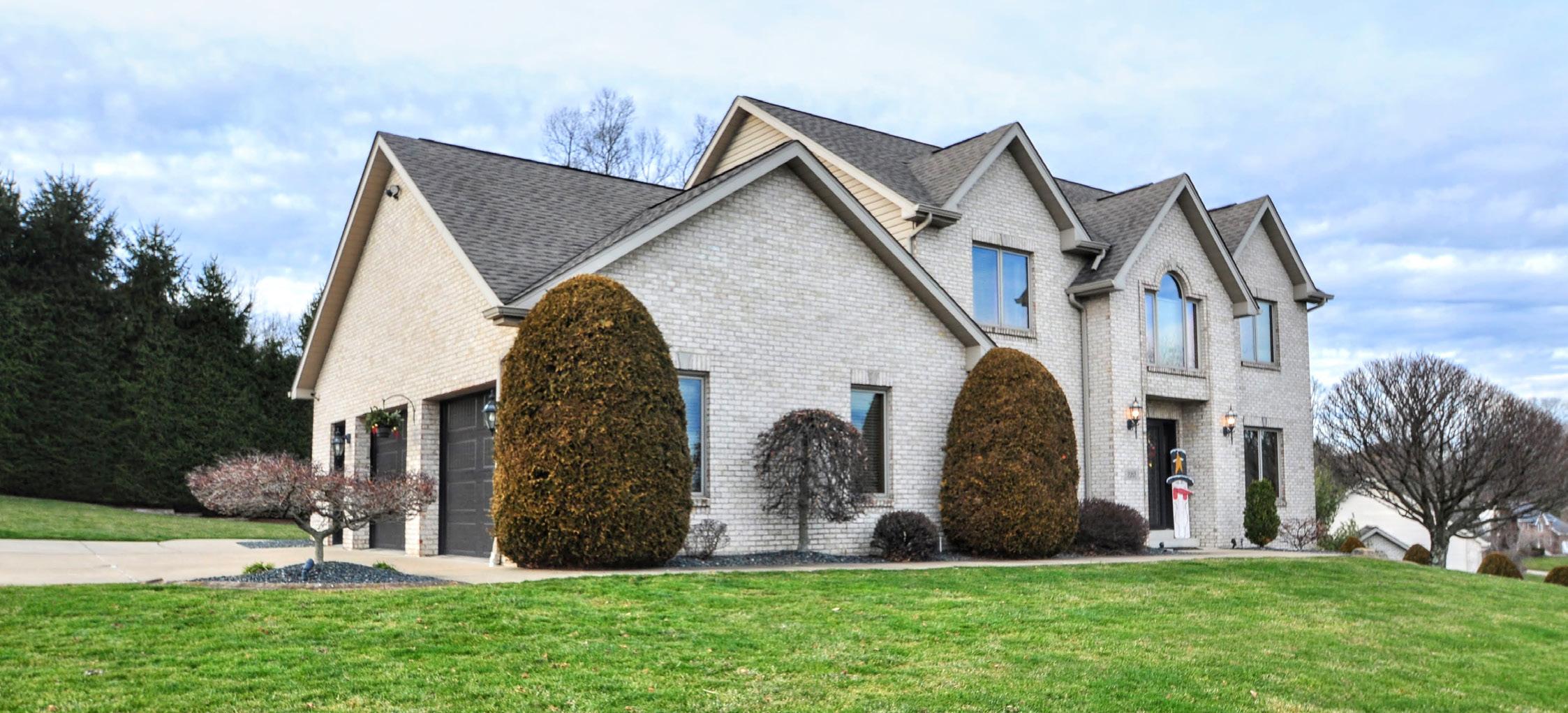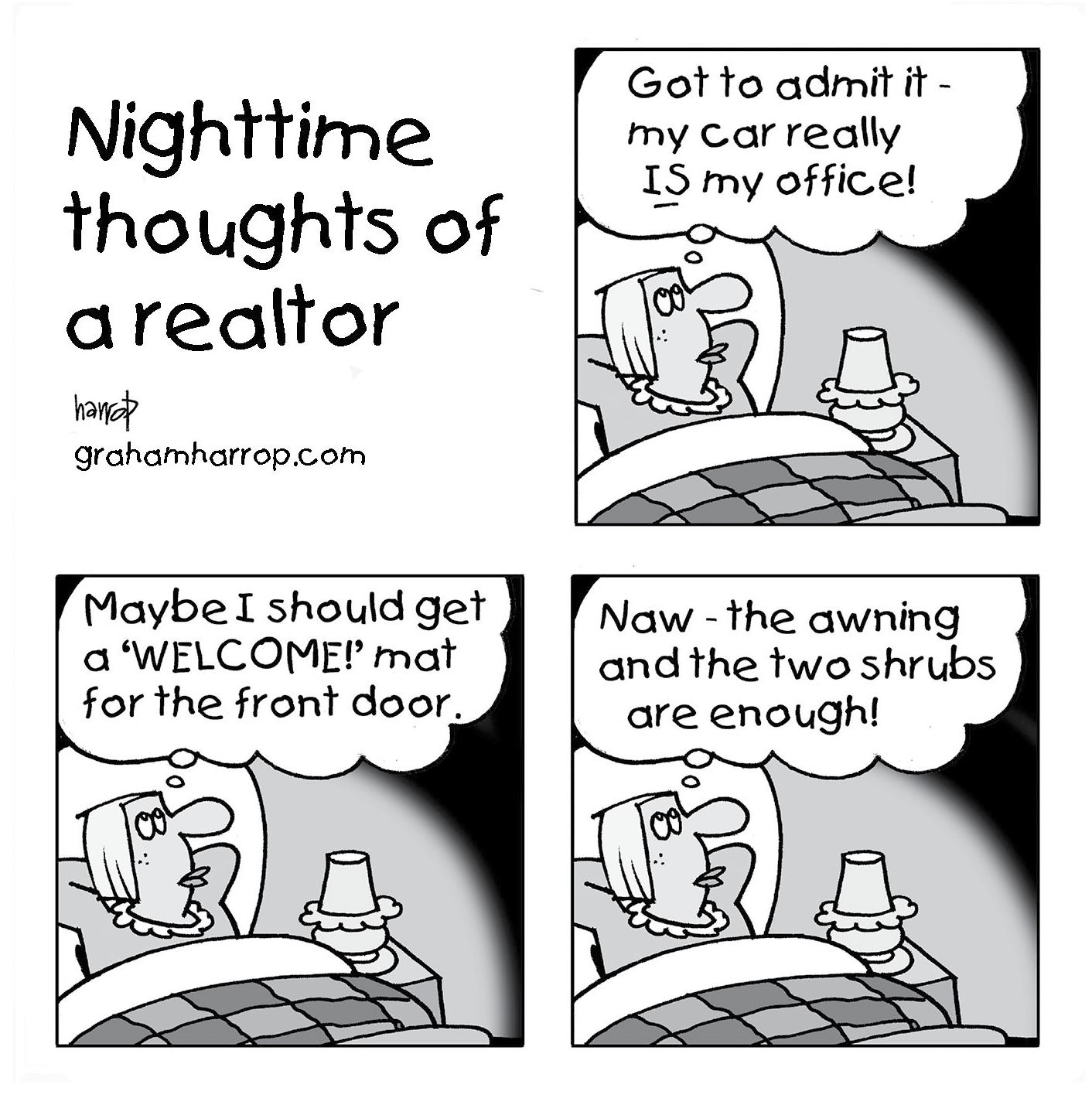








Everyone knows the famous real estate phrase: location, location, location. In fact, it is hard to underestimate the pivotal role that a region can play when it comes to determining a home’s value. In today’s competitive market, the littlest things can truly add up—especially when it comes to neighborhood amenities. While most savvy agents know the figures regarding school
district ranking and local property taxes, have you ever considered the under-the-radar amenities that drive buyers and bidding wars? To derive the highest value from a listed home, you need to paint a complete picture of the area in which you’re selling. With that guiding principle in mind, let’s consider a few modern amenities and how they add drastically to your bottom line.
Walking a fifteen-minute radius of the area or performing a deep-dive into customer review sites or food blogs can help you identify hidden gems or local favorites.
Everyone has a favorite take-out spot, coffee shop, or neighborhood watering hole. Identifying the key players in an area—such as restaurants, nightlife, and entertainment hotspots—will create a livable picture that prospective buyers can latch onto. Walking a fifteen-minute radius of the area or performing a deep-dive into customer review sites or food blogs can help you identify hidden gems or local favorites. While a cute coffee shop down the street may seem like a bonus instead of a foundational amenity, you never know what kind of homebuyer you might net if you include the cozy characteristics that make a house a home.
While this rule may not apply to all properties, considering access to public transportation is a major draw for today’s buyers. Especially amidst the more eco-conscious Millennial segment eager to buy within city limits—knowing public transportation access points and schedules can add serious value to listed properties. Also, think outside the box: do nearby thoroughfares boast dedicated bike lanes? Are there plans to expand rail lines to the area in the future? Deliver a confidant picture of the area’s public transportation access and prospective buyers will trust your expertise.
As humans, we’re drawn to narratives. Sales pitches and marketing campaigns hinge on an alluring storyline. That’s why understanding a neighborhood’s history can frame and contextualize a property to great effect. After all, buyers aren’t just drawn to sturdy foundations and bedroom counts; they like to imagine their lives unfolding inside those four walls. Get a sense of the area’s historical timeline, architectural style, noteworthy community members, and the like. Conveying this intriguing information to buyers helps them connect more personally with a property, while understanding the holistic picture of their potential new home.
While it is always good to cover the basics of school districts and property values, it is even more useful to expand your knowledge base and bring a warm, human element to locational knowledge. Not only will you appeal to a younger demographic of homebuyers who values this strategic information, but you will also broaden your understanding of your service area at large. Think of it this way: a neighborhood is far more than a collection of homes on a block. A neighborhood is about atmosphere, access, and a sense of community. If you authentically appeal to this guiding truth, and buyers will surely rise to the occasion.

Real estate experts suggest prospecting daily so that your sales pipeline never runs dry. But sometimes all that effort doesn’t translate into results. If your prospects aren’t becoming clients, there’s a reason, which is better than it sounds because that means you can fix the problem.
The Association of Real Estate License Law Officials estimates that there are about 2 million active real estate licensees in the United States alone. Of course, not all these individuals are working in the same markets. Nonetheless, that
If your prospects aren’t becoming clients, there’s a reason, which is better than it sounds because that means you can fix the problem.
means that realtors face a lot of competition. If you are slow to respond to messages from prospective clients, someone else is sure to beat you to it. As a rule of thumb, it’s best to return calls and emails within 24 hours.
If you’re too busy working with active clients to return the phone calls and emails of prospective clients, consider hiring a real estate assistant who can help take administrative or marketing tasks off your plate.
There are different reasons why a client might not trust you, some of which overlap with others on this list. When a client asks you a question, do you answer it directly or do you sidestep it? Do you have testimonials and reviews from happy clients publicly available? Do you have an online presence? Social proof of your skills and knowledge is key.
Is your client constantly coming to you with new listings or marketing ideas rather than the
other way around? Do they mention real estate and finance terms you’ve never heard of or ask you questions you’ve never thought to ask yourself? Every agent starts somewhere, but if this seems to be a pattern, it’s one clients will pick up on too.
Your clients want to know that you will add value to their home buying or selling experience, and part of that value is your expertise and passion.
It’s not enough to be on Zillow or have a Facebook page. There are clients who don’t use these platforms, and at the end of the day, you don’t own the content or your access to it. Both platforms could suddenly go out of business and any following you’ve gained could be lost.
It doesn’t cost much to create and maintain a website today. If customization matters little to you, sometimes you can even get up and running for free. At the very least, it’s a good idea to invest in a domain name because yourwebsite. wordpress.com looks a lot less professional than yourwebsite.com.
When clients don’t think you care, it usually means they don’t feel like you are listening. You may have systems, processes, and a proven marketing strategy. You may like to get right down to business, but to your client, this isn’t just business—it’s their life and their family’s livelihood.
When your client tells you what’s important to them, they want to make sure that you really hear them. Make sure your body language conveys that. Slow down. Shut your office door. Make eye contact, nod your head, and pause before you speak so that they understand that you’ve put thought into your words—that they aren’t simply lines from a script.
Remember that your clients don’t speak real estate. At most, they might buy or sell a home once every few years. They hired you to be their advocate and may even expect you to be a bit of a teacher too. Use layman’s terms so that your
client fully understands how the two of you will work together.
Your clients are home buyers and sellers, yes, but who is your ideal client? Some specialties you might consider are college students and recent graduates, working professionals, military families, seniors, CEOs, or other high-profile clients.
As a newer agent, your target audience might be anyone who will hire you, but over time, you might find that you click more with certain clients, that their lifestyle is similar to yours, or that their goals align with your mission. Whatever the reason, marketing your business to this “ideal client” rather than every potential client will make selling your services easier.
Remember: It’s within your power to alleviate your client’s concerns, but understanding why your prospects aren’t turning into clients is a good start.



Top Agent Devie Rollison leveraged her insider’s understanding of the Pittsburgh market to serve Allegheny, Washington, and Westmoreland counties as a solo agent with Realty One Group.
Devie Rollison of Pittsburgh, Pennsylvania combines over fourteen years of licensed industry expertise with a passion for education and a penchant for candor to fuel her thriving real estate business. “Every single day is different – you never stop learning in this business. I’m always looking for the next thing that can set me apart and
help elevate the level of service I give to my clients. Taking classes on the power of artificial intelligence, jumping into Zoom seminars – anything and everything.”
As a former leasing agent for an apartment community, Devie’s exposure to the world of real estate started nearly two decades ago.
“I had always been interested in the industry,” she recalls. “My company was going through a transition at the time, so I decided to take a leap of faith.” After becoming a licensed REALTOR® in 2010, Devie started leveraging her insider’s understanding of the Pittsburgh market to serve Allegheny,
Washington, and Westmoreland counties as a solo agent with Realty One Group.
Today in 2024, Devie averages fifty-nine annual transactions, bolstered by a book of business that is over ninety percent repeat and referral clientele. “I run my business



Devie
averages fifty-nine annual transactions, bolstered by a book of business that is over ninety percent repeat and referral clientele. “I run my business with integrity
and respect,” she exudes.
with integrity and respect,” she exudes.
“Once someone knows you are knowledgeable and true to your word, you’ve earned a client for life.” Along with this straightforward commitment to transparency, Devie utilizes a robust digital footprint that foregrounds professional drone photography that is broadcasted to every social media platform, ensuring her listings garner
competitive offers. In addition to cultivating virtual connectivity, she regularly hosts in-person client appreciation events, including an annual photography session with Santa Claus!
When she’s not striving to be at the vanguard of her industry or supporting her clients, Devie goes to great lengths to champion
her extended community. She is a former President of the Elizabeth Borough Council and a member of the Women’s Club in Elizabeth, and she continues to participate in endeavors sponsoring sports teams, contributing to the annual Zombez MakeA-Wish Christmas lights celebration, and providing meals to her neighbors during
the holidays. “I just genuinely love to help people – that makes everything worth it. It always comes back to helping those who are nearest to me.”
While she prides herself on these professional and interpersonal practices, Devie’s ability to celebrate and beautify the world



at large plays out in her private life as a passionate furniture restoration hobbyist. “I love thrifting and saving beautiful antiques – I’ll try to salvage something before I paint over it. I like to preserve the original piece as much as possible while keeping my mind open to the possibilities.” This keen eye for individuality and workmanship, combined with a knack for creativity,

helps Devie serve her clients by identifying pristine architecture and helping them make the most of every nook and cranny in their home. “I just want to showcase the beauty – no matter the scale! I’m grateful that I get to be creative, do a lot of problem-solving, and put some of my business savvy to use helping other people pursue their dreams.” For

When house-hunters compile their lists of musthave home items, a dreamy backyard space is often near the top. After all, who doesn’t want an outdoor oasis of their very own? From summer barbecues to open space for your dog to frolic— everyone has their own aspirations when it comes to creating the perfect backyard paradise. But as homebuyers seek properties deeper within city limits, and Millennials opt for properties with
urban amenities and access, home-connected outdoor spaces are becoming a bit smaller in stature. Of course, size isn’t everything when it comes to outdoor space. Even balconies, rear patios, and ultra-tiny yards can provide homebuyers with the outdoor reprieve they crave—even on a smaller scale. For a few ideas that can help you envision all the possibilities of a micro outdoor space, read on for inspiration.
When space is at a premium, think up instead of out. In other words, make the most of small spaces by capitalizing on your backyard, balcony, or patio’s overhead height. Mood-setting string lights, hanging pocket or wall gardens, floating shelves, and modern overhead hangings can create a sense of privacy and luxury without cluttering the square footage on the ground.

Not in love with your patio pavers? Don’t have the sweetest view off your balcony? Whatever your small backyard living space gripe may be, there’s always a solution if you go back to the basics. Consider the structural components of your outdoor space that you aren’t in love with and there’s likely an affordable, eye-pleasing solution. For instance, plenty of home goods
retailers make a variety of punchy or luxe outdoor rugs that can disguise stained or lackluster outdoor flooring. Power-washing is another great solution for old grime and dirt that’s an eyesore. Don’t have a great view? Planting ivy on bare walls, installing adjustable mood lighting, or hanging planters can create a more inviting ambiance.

While there may not be room for a swimming pool or pond in a micro yard or balcony, you can still bring the calming presence of water to your outdoor oasis. Fountains run the gamut in sizing and price, making this amenity an easy acquisition. What’s more, a running fountain not only adds a soothing sound to your space, but it also helps drown out noise from the street or the neighbors—making your space entirely your own and stress-free.
If you love to entertain in outdoor spaces or relish the chance to man the grill—small outdoor spaces don’t have to trip you up. Grill options (both propane and charcoal) come in a range of sizes, many of which can be outfitted securely to balcony posts or be tucked away and out of sight when out of use. Consider nesting tables or those with a removable leaf to adjust your seating and dining options depending on company.
Another trick? A small, oscillating fan can keep air flow moving in a small space during grill season—and can be easily affixed to walls or posts, as well.
Don’t let yourself or clients be discouraged by spaces with more limited square footage in outdoor areas. Furniture and design trends have already begun shifting toward providing better small-space options, and at the end of the day, a backyard space is all about providing an area for relaxation. With a few well-placed, strategic choices, you can still have it all.





Despite the importance of finding a Realtor® that is the best person to serve their needs, a lot of people only end up interviewing one Realtor® when they’re thinking about buying or selling a home. A lot of times people make that decision based on a referral, but why not do everything you can to be the name they think of when they make the decision to hire a real estate professional outside of referrals? Especially if you’re starting out and haven’t built up any repeat and referral business yet.
When you want to make your name synonymous with real estate transaction success, you might want to consider branding yourself. Personal branding, long a staple of Corporate America, is also an invaluable tool for those in the real estate industry as well. Understanding branding and being consistent about it, is one way to insure you’ll have a successful and long-lasting business. It’s up to you to make consumers think that their success in real estate is dependent on finding the perfect agent—YOU.
Branding is a long term marketing strategy that builds your carefully crafted image over time through consistent repetition. A common misperception about branding is that it’s is the same thing as marketing. While the two go hand and hand in many ways, branding is specifically about creating and reinforcing the perception of not only who you are as a person, but what your business values are, and getting that out to the world in a consistent way
Everything from your logo, to your website
to your social media presence, should all line up and reinforce your brand. It’s that repetitiveness that will hammer home the perception you are trying to create. Your brand informs your marketing, while your marketing strengthens your brand. Of course then you have to do is make sure your service lives up to what you’re selling. Getting them in the door is one thing, but you’re in it for lifetime customers and referrals. Every brand is strengthened when it is built on a foundation of integrity and trust.
Although it might take time and money upfront to get it right, branding is almost guaranteed to pay off in the long run. But branding is more than just having a graphic designer come in and make a logo. Consider branding more of a promise to your clients and potential clients, succinctly stating the value and expertise working with you will afford them. There are clear, tried and true methods to creating your branding. Because you have to go all in on the way you want to brand yourself, it’s important to evaluate fully before you make the leap.
This all starts with an honest assessment of your business and where you want it to go, including how much time and money you’re willing to invest to get there. After that you may want to add focusing on a niche market to your branding. Regardless of whether or
not you have a niche, another important part of branding is coming up with a memorable tagline that sells your brand or niche. All of your graphics, picture and information, should be consistent across all social media platforms, marketing materials, advertising and websites.
If you are interested in branding yourself, there are numerous books on the subject that will give you an in-depth tutorial on the process and the steps you need to take. But what it basically all comes down to is commitment. Find a brand that is true to you, one that you can commit to performing and then back it up by not only meeting, but exceeding what you promised. If done right, soon you’ll become an in-demand agent whose name is synonymous with success!













In the era of apps, instantaneous social platforms, and text messaging, it’s little surprise that the modern homebuyer begins his or her search for real estate representation online. Even if you’ve got a top-notch website or an influential social media presence, how do you connect with web surfers who have yet to commit to the services you offer? Take a look below to learn a few key techniques to bridge the gap between digital interest and real-world sales.
Like it or not, our digital culture relishes immediacy and instant gratification. With that in mind, be sure to stay on top of online interest forms, e-mails, or newsletter signups. Don’t let an online lead go to waste by taking too long to engage and follow-up. Things move fast, and it’s easy for potential clientele to forget which websites they’ve visited. Even if your lead isn’t ready to commit then and there, you demonstrate your
accessibility and attentiveness by following up swiftly—a characteristic anyone would seek in an agent or lender.
When online back-and-forth goes stale, communication drops off quickly. If you’re following up via e-mail, social media, or text, be sure to keep topics focused squarely on the potential client. Ask open-ended questions to give your lead the opportunity to loosen up and engage on a personal level. There’s no better way to cement a digital lead than to take a pointed interest in the specifics of their situation. Doing so transforms the impersonal invisibility of the internet into a true connection.
Plenty of businesses send impersonal, automated messages in response to an online inquiry, but establishing a true connection may mean providing your lead with something of value. Perhaps you’re forwarding a property for sale that fits the interests of your lead, or a relevant article, or maybe you take the time to send a personal message—demonstrable value and a personal touch separate your follow-up response from spam. Other ideas to consider when
adding value to your follow-up technique: incorporate area promotions and access to local events, make a date for coffee, or offer a brief consultation free of charge to make the first move.
If you don’t connect with your internet lead right off the bat—don’t be discouraged. It often takes multiple tries before a follow-up interaction sticks. Folks are busy and frequently flooded with e-mail blasts and junk mail. A lead may not engage without a little prodding that shows you’re committed to their business. Remember: it’s the squeaky wheel that gets the grease.
Digital leads don’t have to be difficult to capture. The internet plays a powerful role in funneling modern clientele your way, but in order to take full advantage of the web’s reach, you’ll need to tailor your follow-up technique. Mastering the fundamentals of digital communication is the first step to converting digital interest into concrete business. Keep these tips top-of-mind as you build your online presence and mine the vast world wide web for an endless wealth of clientele. Earning a command of digital lead conversion is the surest way to bolster your business in the ever-evolving digital era.
